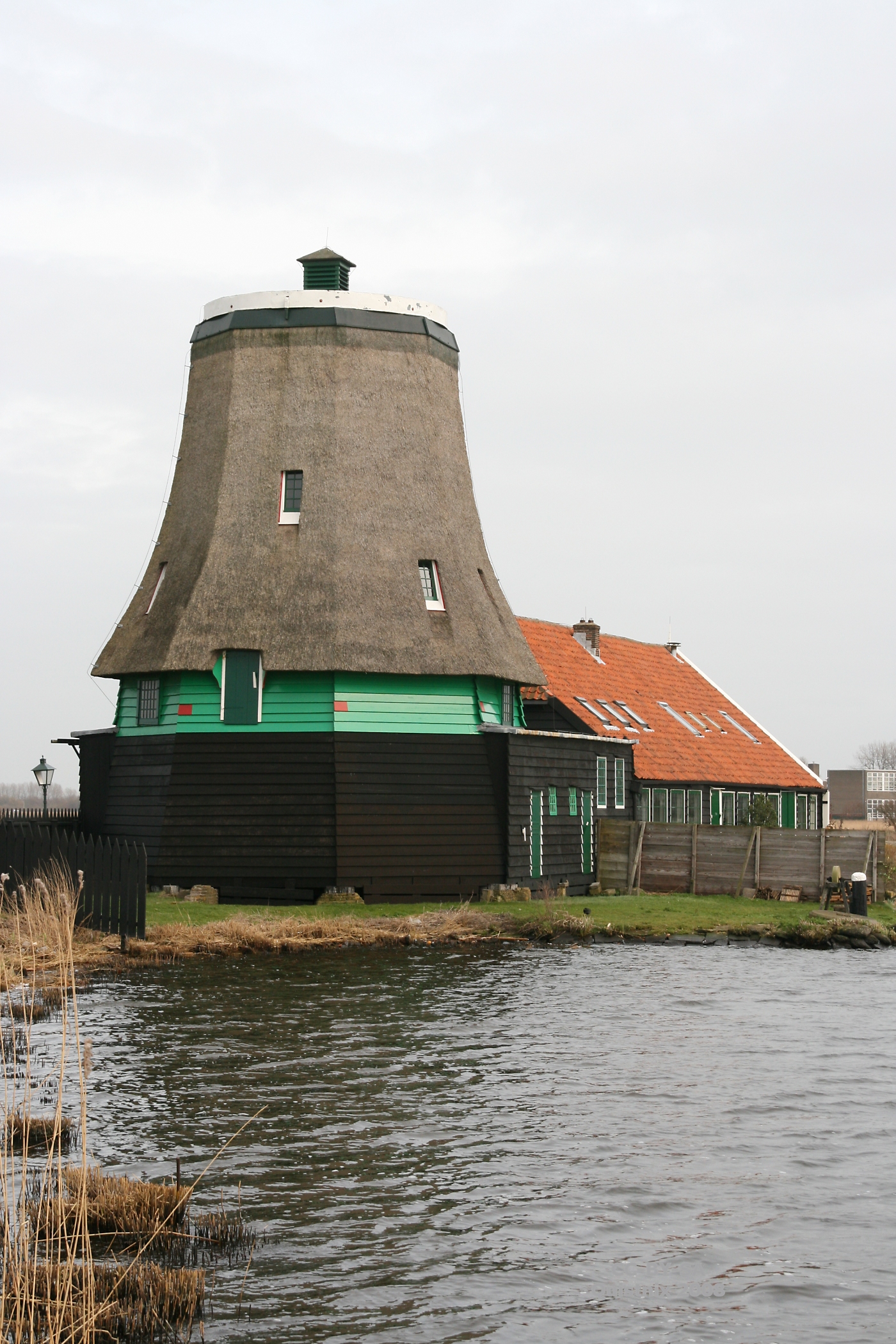Windmills of the Zaanse Schans – By Murdockcrc – Wikimedia Commons
Top 10 Amazing Facts about the Windmills at Zaanse Schans
Zaanse Schans is a popular neighborhood of Zaandam, which is near Zaandijk town in the Netherlands. The neighborhood is famous for a lot of things with the most popular one being its collection of windmills.
Zaanse Schans is less than an hour from Amsterdam making it accessible to tourists. The collection of windmills at Zaanse Schans consists of working mills of various types and other monuments.
The collection includes; an oil spice mill, sawmills, and oil mills. Below is a list of facts about the Windmills at Zaanse Schans.
1. The Windmills Were Constructed After The 16th Century
During the 17th to the 18th century, several windmills were constructed in the Zaanse Schans area. The number of windmills in this area is said to have been over 600.
The construction of these mills created the first industrial zone in the region. This is because the mills played a crucial part in the production of various goods and services.
This includes goods such as grind spices, oil, saw wood, and paint as well as services such as land reclamation.
2. Most of the Windmills Were Relocated to Zaanse Schans

Het Jonge Schaap (“The Young Sheep”), sawmill – By Quistnix – Wikimedia Commons
Between 1961 to 1964, old buildings were relocated from Zaanstreek to the Zaanse Schans. These buildings included the mills, their stores, and other structures.
Moving of these humongous structures was done using lowboy trailers. A lowboy trailer is a semi-trailer with two drops in deck height. This feature allows the trailer to carry loads of up to 12 ft (3.66 m) which other trailers cannot.
However, two of the windmills did not require movement and they remained at Zaanse Schans. Which is where they were originally constructed.
3. The Windmills Are a Major Tourist Attraction
Windmills are prominent in the Netherlands and its history. To this day, there are several windmills scattered all over the country in various villages, towns, and cities including Amsterdam.
However, for one to truly experience a variety of windmills, as well as experience the technology, no other site compares to Zaanse Schans. The Zaanse Schans is an international tourist destination bringing in millions of visitors annually
Here you not only get to witness fully functional windmills but also get to see a variety of them. Everything is set up to live up to tourists’ expectations of what the Netherlands should be.
There is mustard soup and apple pie, clog manufacturers and workshops, booklets with information about the windmills translated into many different languages, etc.
4. There are Eight Mills at Zaanse Schans

De Os (“The Ox”), oilmill By Quistnix – Wikimedia Commons
There areatotal of eight windmills at Zaanse Schans. The De Zoeker, also known as the seeker is an oil mill. De Huisman (The Houseman), which is a mustard mill. De Gekroonde Poelenburg (The Crowned Poelenburg), a saw mill.
The De Kat (The Cat) is a dye mill. Het Jonge Schaap (The Young Sheep), a sawmill. The De Os (The Ox), an oil mill. De Bonte Hen (The Spotted Hen), an oil mill. The Het Klaverblad (The Cloverleaf), a sawmill.
5. Open All Year Round
Zaanse Schans is open all year round and offers a range of sights and activities. This includes windmills, stores, cafés, and restaurants, as well as traditional artisan demonstrations.
Nearly everything is open seven days a week from 10:00 to 17:00 hours during peak season, which runs from April through November. Some attractions might be closed on weekends and during holidays (low season).
Some windmills are closed from public use when they are in active use or at least access is limited to a few people at a time.
6. The Collection Has the Only Paint-Making Mill in The World

De Kat (“The Cat”), paint mill – By Quistnix – Wikimedia Commons
The only functioning paint-producing windmill left in existence is De Kat. The first “De Kat” mill was constructed as an oil mill in 1646. It was burned down in 1782 but quickly rebuilt afterward.
The mill remained in operation until 1904 when it underwent partial demolition. Due to urban development, the eight-sided paint mill “De Duinjager” was moved from its original location in 1960. It was then put on top of the former “De Kat” storehouse.
The mill is once more processing raw materials like chalk to create paint pigments the old-fashioned way. The Vereniging De Zaansche Molen is the mill’s owner.
7. Some of The Mills at Zaanse Schans Are Active
After the mills were relocated from Zanstreek, some of them were restored to functional conditions. Others are replicas that have been built as late as the 21st century.
For example; the De Zoeker, an oil mill is operational. Other operational mills include the De Huisman which makes mustard, the De Gekroonde Poelenburg which is a sawmill, and the oil mill called De Bonte Hen.
The Het Jonge Schaap at Zaanse is a replica of the original and was built in 2005.
8. The Windmills Are Not the Only Attractions at Zaanse Schans
Other than the infamous windmills, the Zaanse Schans is home to seven museums. They include the Weavers House, Cooperage, Jisper House, Zaan Time Museum, the Albert Heijn Museum Shop, and the Bakery Museum.
Other attractions in the region include artisan demonstrations, restaurants, boat rides, and restaurants.
9. Zaanse Schans Is Easily Accessible
Whether visiting the windmills the museums or just Zaanse Schans, transport is fast and easy to access. The area can be reached by bus from Amsterdam Central Station in 40 minutes.
By train, one can arrive at Koog-Zaandijk station which is a mere 15-minute walk from the mills. The mills are also near a water body (river) that is navigable.
10. The Mills Supported Netherland’s Economy for Years

Three windmills in Zaanse Schans – Unknown Author – Wikimedia Commons
These windmills were created early and are responsible for growing Netherlands industrially and economically. Take for example the De Gekroonde Poelenburg which is referred to as Holland’s secret weapon.
The Dutch could saw wood much more quickly than before because of this technology. Production of wood this fast allowed the Dutch to build ships faster.
This made Holland a maritime power through trade, constructing a navy, and traveling the world’s seas. The benefits of this to its economy were immense.
There were many types of windmills in the country some were used to reclaim lands and others to produce goods that were traded.
Planning a trip to Paris ? Get ready !
These are Amazon’s best-selling travel products that you may need for coming to Paris.
Bookstore
- The best travel book : Rick Steves – Paris 2023 – Learn more here
- Fodor’s Paris 2024 – Learn more here
Travel Gear
- Venture Pal Lightweight Backpack – Learn more here
- Samsonite Winfield 2 28″ Luggage – Learn more here
- Swig Savvy’s Stainless Steel Insulated Water Bottle – Learn more here
Check Amazon’s best-seller list for the most popular travel accessories. We sometimes read this list just to find out what new travel products people are buying.









